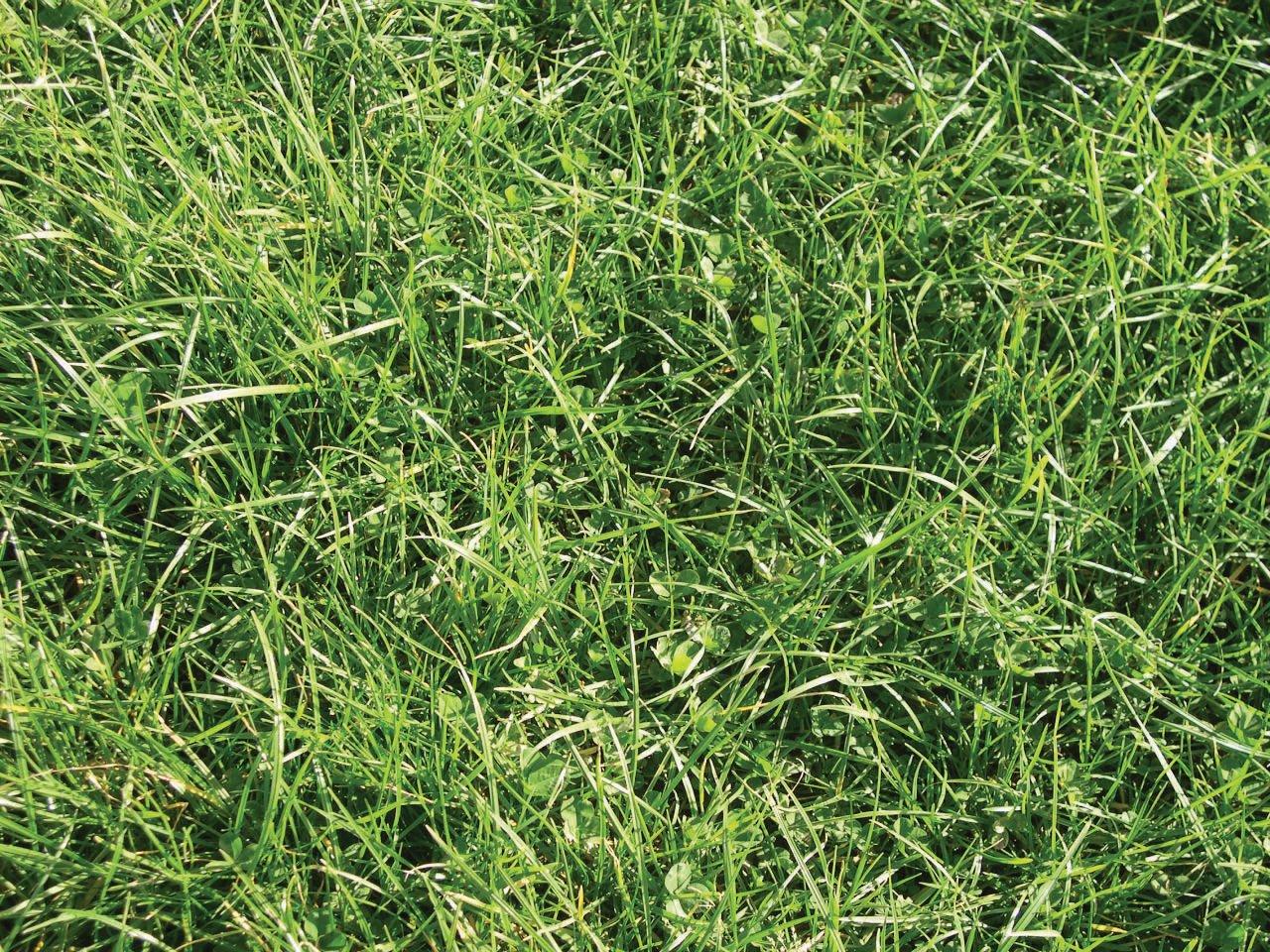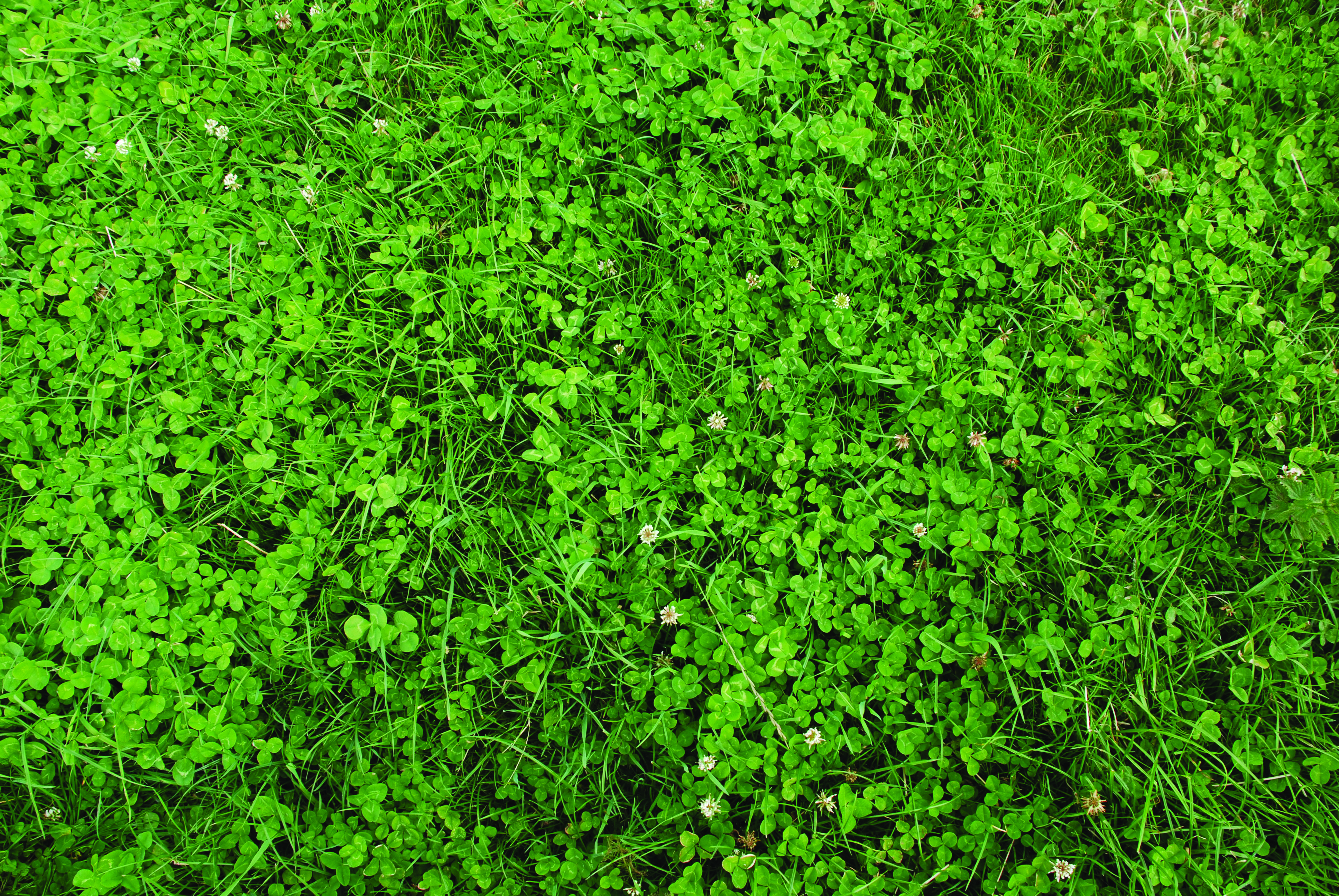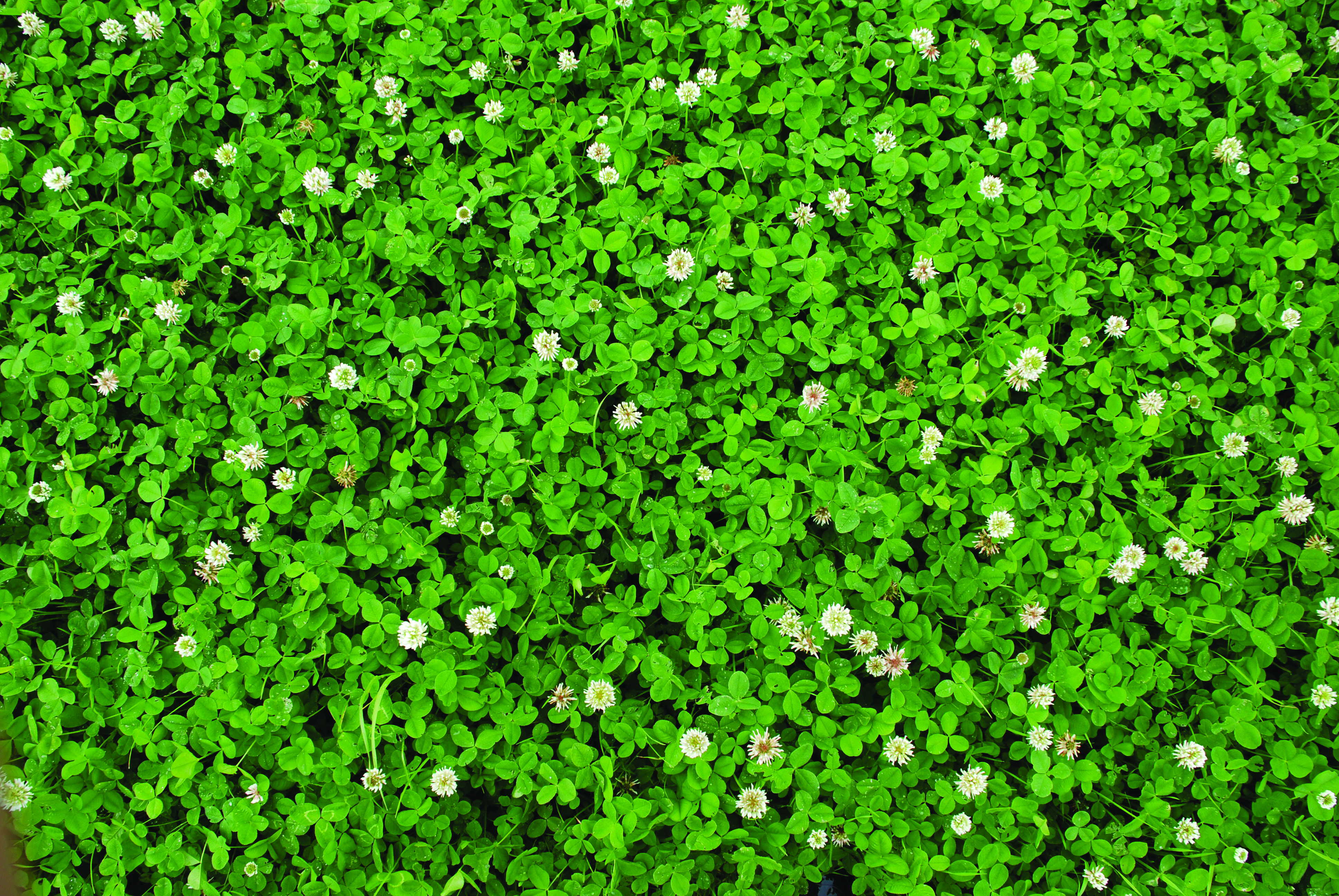United Kingdom
June 18, 2021
Clovers can replace some, or all, bagged nitrogen (N) in both conventional and organic swards. How much N is fixed depends on the clover content in the sward.
The optimum amount of white clover in a field is 30% of the DM of the total sward. At this level, white clover can fix 180 kg N/ha/year and both animal and companion grass performance will benefit. In new leys, be patient for full N-fixing effect in grass production as it takes a whole season or more before it achieves full N-fixing ability.
Estimating the proportion of clover growing can be tricky because its leaf lies face up compared with grass. To reach 30% clover, the sward must appear to have 50–60% clover at its peak growth in August – generally, clover content is half the amount of what it looks like.
The images below may help as a guide to assessing clover content in your pastures.
 Figure 1. 10% clover content
Figure 1. 10% clover content
If clover content is too low, do not allow grass to shade it out. Make sure it is grazed frequently, or take the paddock out of the grazing rotation as surplus before the plants gets too mature.
Introduce white clover into existing swards by:
- Slot seeding/direct drilling
- Broadcasting following scarification
- Hoof and tooth, i.e. using animals to trample seed in and graze grass tight if 20–40% bare soil is visible
 Figure 2. 30% clover content
Figure 2. 30% clover content
Under rotational grazing, swards with 30% white clover content can be maintained for at least 10 years, with total sward DM yields reaching 10–11 t/ha/year.
 Figure 3. 60% clover content
Figure 3. 60% clover content
If clover becomes dominant throughout most of the season and little grass is visible, it can unbalance the sward.
If clover dominance is a problem:
- Graze more intensively, particularly with sheep
- Use tactical applications of N to stimulate grass growth so it can outcompete the clover
- Avoid regular silage cutting because the offtake of N and light penetration on the growing points encourage clover growth
- Consider using clover varieties with smaller leaves in future
For more information on managing clover in your pastures, check out our latest webinar here.